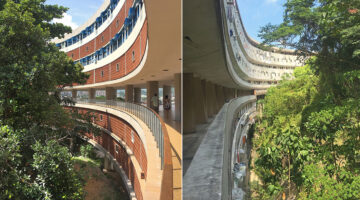Canadian Observatory on Homelessness
Main objectives of the project
The Canadian Observatory on Homelessness is a dynamic research and policy partnership committed to ending homelessness in Canada and beyond. With its flagship projects like the Homeless Hub and the Systems Planning Collective, it offers comprehensive resources and guidance to empower stakeholders at all levels. By emphasizing accessibility and practicality in its approach, the COH continues to lead the charge in leveraging research for tangible action and positive change.
Date
- 2008: Implementation
Stakeholders
- York University
- Canadian Observatory on Homelessness
Location
Country/Region: Canada, Toronto
Description
The Canadian Observatory on Homelessness, under the leadership of President & CEO Stephen Gaetz, is a non-partisan research and policy partnership involving academics, decision-makers, service providers, and individuals with lived experiences of homelessness. Initially established as the Canadian Homelessness Research Network in 2008 through funding from the Social Sciences and Humanities Research Council, it has since evolved into a global leader in homelessness solutions and knowledge mobilization practices.
Going beyond the traditional role of a research institute, the COH collaborates with partners to conduct research aimed at influencing solutions to homelessness. With a focus on bridging the gap between research, policy, and practice, it supports service providers, policymakers, and governments in enhancing their capacity to address homelessness effectively.
One of its flagship projects is the Homeless Hub, renowned as the largest library of homelessness research globally. Originally launched in 2007 with 500 resources, it underwent a redesign in 2018 to provide access to over 30,000 resources, including plain-language reports, tools, and frameworks. Notably, the Homeless Hub serves as a vital tool for policymakers, offering a wealth of information on homelessness policies, case studies, and best practices. Additionally, it functions as a data portal, offering comprehensive community profiles detailing homelessness data for each Canadian province and outlining effective policies for ending homelessness.
What distinguishes the COH from other online libraries or databases is its approach to research material. Emphasizing accessibility and practicality, it presents evidence-based research in clear language, along with actionable recommendations. This commitment to making homelessness research readily available to all underscores the belief that solutions should be grounded in research.
In addition to the Homeless Hub, the COH oversees other noteworthy initiatives, such as the Systems Planning Collective. Developed in partnership with A Way Home Canada and HelpSeeker, this collective is dedicated to assisting communities and governments in preventing and ending homelessness through evidence-based systems planning. Through comprehensive modules covering both basic and advanced systems planning, the collective provides tools and resources to support communities across Canada in improving local outcomes related to homelessness.
In conclusion, the Canadian Observatory on Homelessness stands as a beacon of collaboration and innovation in the field of homelessness research and policy. Through initiatives like the Homeless Hub and the Systems Planning Collective, it empowers communities, policymakers, and service providers with the knowledge and tools necessary to enact meaningful change. By continuing to bridge the gap between research, policy, and practice, the COH remains steadfast in its commitment to ending homelessness and improving the lives of individuals and families across Canada.





